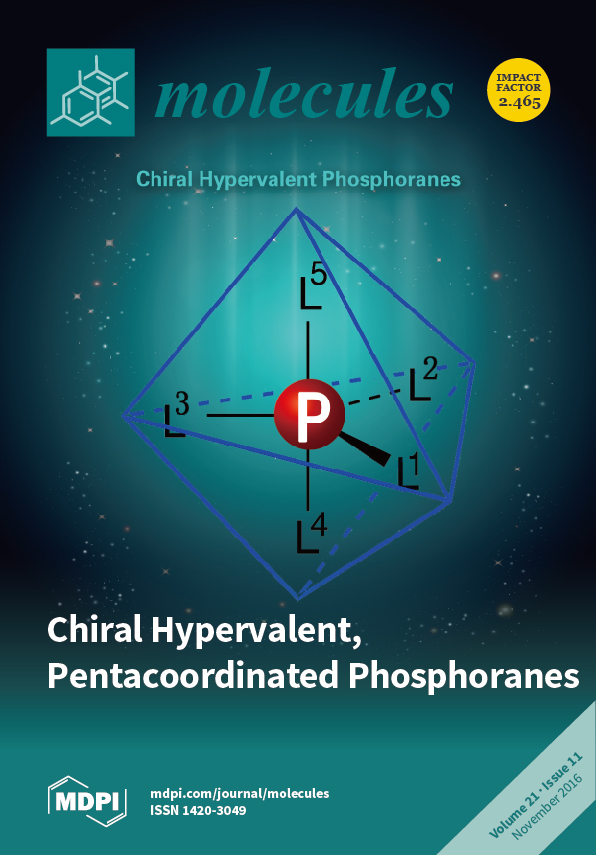Cobalt pi-complexes, previously described in the literature and specially synthesized and characterized in this work, were used as catalysts in homogeneous oxidation of organic compounds with peroxides. These complexes contain pi-butadienyl and pi-cyclopentadienyl ligands: [(tetramethylcyclobutadiene)(benzene)cobalt] hexafluorophosphate, [(C
4Me
4)Co(C
6H
6)]PF
6 (
1); diiodo(carbonyl)(pentamethylcyclopentadienyl)cobalt, Cp*Co(CO)I
2 (
2); diiodo(carbonyl)(cyclopentadienyl)cobalt, CpCo(CO)I
2 (
3); (tetramethylcyclobutadiene)(dicarbonyl)(iodo)cobalt, (C
4Me
4)Co(CO)
2I (
4); [(tetramethylcyclobutadiene)(acetonitrile)(2,2′-bipyridyl)cobalt] hexafluorophosphate, [(C
4Me
4)Co(bipy)(MeCN)]PF
6 (
5); bis[dicarbonyl(B-cyclohexylborole)]cobalt, [(C
4H
4BCy)Co(CO)
2]
2 (
6); [(pentamethylcyclopentadienyl)(iodo)(1,10-phenanthroline)cobalt] hexafluorophosphate, [Cp*Co(phen)I]PF
6 (
7); diiodo(cyclopentadienyl)cobalt, [CpCoI
2]
2 (
8); [(cyclopentadienyl)(iodo)(2,2′-bipyridyl)cobalt] hexafluorophosphate, [CpCo(bipy)I]PF
6 (
9); and [(pentamethylcyclopentadienyl)(iodo)(2,2′-bipyridyl)cobalt] hexafluorophosphate, [Cp*Co(bipy)I]PF
6 (
10). Complexes
1 and
2 catalyze very efficient and stereoselective oxygenation of tertiary C–H bonds in isomeric dimethylcyclohexanes with MCBA: cyclohexanols are produced in 39 and 53% yields and with the
trans/
cis ratio (of isomers with mutual
trans- or
cis-configuration of two methyl groups) 0.05 and 0.06, respectively. Addition of nitric acid as co-catalyst dramatically enhances both the yield of oxygenates and stereoselectivity parameter. In contrast to compounds
1 and
2, complexes
9 and
10 turned out to be very poor catalysts (the yields of oxygenates in the reaction with
cis-1,2-dimethylcyclohexane were only 5%–7% and
trans/
cis ratio 0.8 indicated that the oxidation is not stereoselective). The chromatograms of the reaction mixture obtained before and after reduction with PPh
3 are very similar, which testifies that alkyl hydroperoxides are not formed in this oxidation. It can be thus concluded that the interaction of the alkanes with MCPBA occurs without the formation of free radicals. The complexes catalyze oxidation of alcohols with
tert-butylhydroperoxide (TBHP). For example,
tert-BuOOH efficiently oxidizes 1-phenylethanol to acetophenone in 98% yield if compound
1 is used as a catalyst.
Full article






